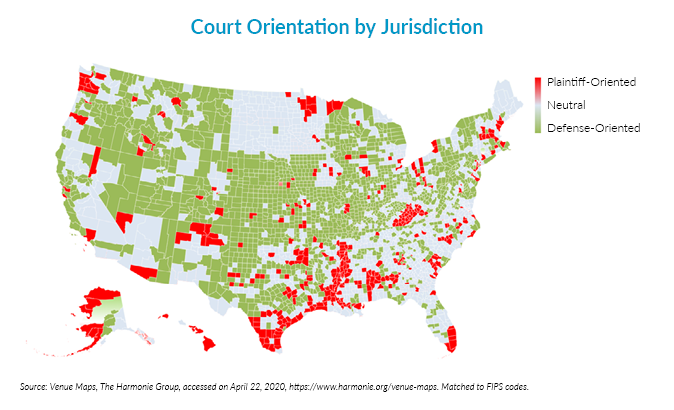-
Property & Casualty
Property & Casualty Overview

Property & Casualty
We offer a full range of reinsurance products and the expertise of our talented reinsurance team.
Expertise
Publication
Structured Settlements – What They Are and Why They Matter
Publication
PFAS Awareness and Concern Continues to Grow. Will the Litigation it Generates Do Likewise?
Publication
“Weather” or Not to Use a Forensic Meteorologist in the Claims Process – It’s Not as Expensive as You Think
Publication
Phthalates – Why Now and Should We Be Worried?
Publication
The Hidden Costs of Convenience – The Impact of Food Delivery Apps on Auto Accidents
Publication
That’s a Robotaxi in Your Rear-View Mirror – What Does This Mean for Insurers? -
Life & Health
Life & Health Overview

Life & Health
We offer a full range of reinsurance products and the expertise of our talented reinsurance team.

Publication
Key Takeaways From Our U.S. Claims Fraud Survey
Publication
Favorite Findings – Behavioral Economics and Insurance
Publication
Individual Life Accelerated Underwriting – Highlights of 2024 U.S. Survey
Publication
Can a Low-Price Strategy be Successful in Today’s Competitive Medicare Supplement Market? U.S. Industry Events
U.S. Industry Events
Publication
The Latest in Obstructive Sleep Apnea -
Knowledge Center
Knowledge Center Overview

Knowledge Center
Our global experts share their insights on insurance industry topics.
Trending Topics -
About Us
About Us OverviewCorporate Information

Meet Gen Re
Gen Re delivers reinsurance solutions to the Life & Health and Property & Casualty insurance industries.
- Careers Careers
Quantifying Social Inflation - Jury Awards, Income Inequality and the Bronx Jury Hypothesis

September 24, 2020
Christopher Mackeprang
English
Social inflation has been affecting the bottom lines of Liability insurers for a few years, but unfortunately it is a vague term that can manifest itself in a wide variety of ways. Most definitions include elements of attorney tactics, jury behavior, income inequality, nuclear verdicts, and many other factors, all interacting with one another. The concept of social inflation is hard to define, which makes it hard to find empirical evidence that supports or disproves it. However, by clarifying exactly which aspects of social inflation we want to investigate, we can gather data and perform analyses that give us real insight instead of just flashy buzzwords.
A related, more focused concept is the “Bronx Jury” hypothesis (as originated in Tom Wolfe’s The Bonfire of the Vanities), which assumes that juries are “vehicles for redistributing wealth.” This concise idea includes many of the elements of social inflation listed above, but also describes how they interact with one another. Because of this, it allows us to use data to test the hypothesis "Do greater levels of income inequality result in larger jury awards?"1
We set out to investigate whether geographic areas with greater levels of income inequality have juries that award more in damages to plaintiffs. While we were not able to provide direct evidence from trial-level data, we found strong evidence supporting this hypothesis using county-level and state-level data: Jury awards are higher in areas with greater levels of income inequality, all else being equal.

We compared both the number of nuclear verdicts and the median damage award to various measures of income inequality (primarily the Gini index2 and poverty levels) and found consistent relationships between them. For example, income inequality measured by the Gini index explains up to 40% of the observed nuclear verdict outcomes in a jurisdiction, and each additional percentage point in the poverty rate translates into a six percent increase in the median damage award.
Interestingly, income inequality does not predict the likelihood of plaintiffs winning a case. This implies that the merits of the case still determine whether a party is entitled to compensation, but the size of that compensation is related to income inequality.
Also consistent with the hypothesis, we found that the damage awards were only higher for trials with juries, whereas bench trial awards do not appear to be related to income inequality. From this, we might infer that where income inequality has the greatest impact, a jury of peers will seek to alleviate that inequality, while judges (who tend to be more affluent) do not show similar sentiment.
The Chamber of Commerce Lawsuit Climate Survey assigns states a score that measures how fair and reasonable their liability system is perceived to be, from a corporate attorney perspective. Again, we found that greater levels of income inequality were correlated with jurisdictions that are less fair and reasonable from a corporate attorney perspective. Similarly, we found evidence that pro-plaintiff venues (as measured by Harmonie Group Venue Maps3) were also correlated with income inequality.
To examine how these dynamics have changed over time, we compared our results against research findings previously established on an older data set. As expected, we found that the relation between jury awards and income inequality has strengthened. Interestingly, we also found that as income inequality has grown, the relation between the state ranking in the Commerce Lawsuit Climate Survey and income inequality has grown as well.
All this evidence supports the Bronx Jury hypothesis that juries are vehicles for redistributing wealth, and it suggests that jury awards will continue to grow as income inequality increases. The challenges for Liability insurers will continue into the foreseeable future. Assumptions in severity trend should be analyzed with fresh perspective using some of the insights above. We hope by shedding light on some of the underlying dynamics behind social inflation, Gen Re can help insurers navigate the road ahead.
For more on this topic, look out for the forthcoming article from one of my German colleagues with his view of social inflation in the U.S. and what that could mean for the European market.
Endnotes
- This article is based on research conducted by Frank Schmid, Chief Technology Officer for Gen Re, and presented at the Casualty Actuarial Society Loss Reserve Seminar in September 2020. The slide deck is available from Gen Re.
- The Gini index was developed by Italian statistician Corrado Gini in 1912. It is a measure of the distribution of income across a population and often used as a gauge of economic inequality.
- The Harmonie Group of member law firms publishes various surveys and maps about tort law and jurisdictional trends. See https://www.harmonie.org/venue-maps for further details.





